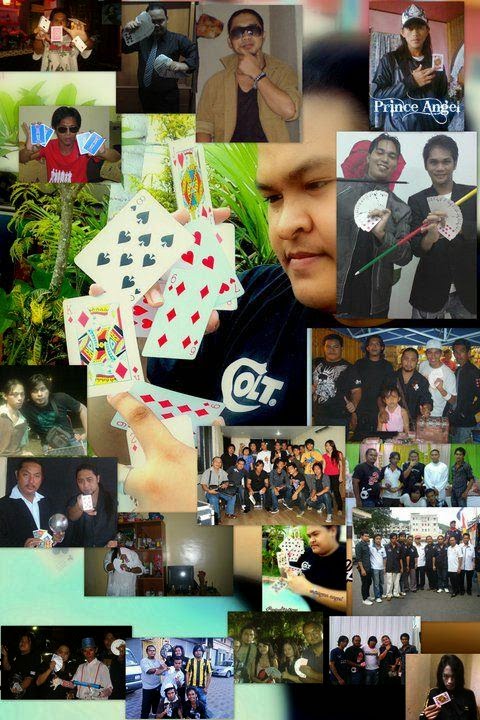The term "magic" is etymologically derived from the Latin word magi. Performances we would now recognize as conjuring have probably been practiced throughout history. The same level of ingenuity that was used to produce famous ancient deceptions such as the Trojan Horse would also have been used for entertainment, or at least for cheating in money games, since time immemorial. They were also used by various religions from times ancient, and were even known as far back as the early 17th century to be used to frighten uneducated populi. However, the profession of the illusionist gained strength only in the eighteenth century, and has enjoyed several popular vogues.
In 1584, Reginald Scot published The Discoverie of Witchcraft. It was written in an attempt to show that witches did not exist, by exposing how (apparently miraculous) feats of magic were done. The book is often deemed the first textbook about conjuring. All obtainable copies were burned on the accession of James I in 1603 and those remaining are now rare. It began to reappear in print in 1651.
Jean Eugène Robert-Houdin, the first modern magician
From 1756 to 1781, Jacob Philadelphia performed feats of magic, sometimes under the guise of scientific exhibitions, throughout Europe and in Russia. Modern entertainment magic owes much to Jean Eugène Robert-Houdin (1805-1871), originally a clockmaker, who opened a magic theatre in Paris in the 1840s. His speciality was the construction of mechanical automata which appeared to move and act as if they were alive. The British performer J N Maskelyne and his partner Cooke established their own theatre, the Egyptian Hall in London's Piccadilly, in 1873. They presented stage magic, exploiting the potential of the stage for hidden mechanisms and assistants, and the control it offers over the audience's point of view.
The model for the look of a 'typical' magician—a man with wavy hair, a goatee, and a tailcoat—was Alexander Herrmann (February 10, 1844 – December 17, 1896), also known as Herrmann the Great. Herrmann was a French magician and was part of the Herrmann family name that is the "first-family of magic". Those who witnessed Herrmann the Great perform considered him the greatest magician they ever saw.
The escapologist and magician Harry Houdini took his stage name from Robert-Houdin and developed a range of stage magic tricks, many of them based on escapology (though that word was not used until after Houdini's death). The son of a Hungarian rabbi, Houdini was genuinely skilled in techniques such as lockpicking and escaping straitjackets, but also made full use of the range of conjuring techniques, including fake equipment and collusion with individuals in the audience. Houdini's show business savvy was great as well as his performance skill. There is a Houdini Museum dedicated to him in Scranton, Pennsylvania.
As a form of entertainment, magic easily moved from theatrical venues to television specials, which opened up new opportunities for deceptions, and brought stage magic to huge audiences. Famous magicians of the 20th century included Okita, Alexander, Harry Blackstone Sr., Harry Blackstone Jr., Howard Thurston, Theodore Annemann, Cardini, Joseph Dunninger, Tommy Wonder, Siegfried & Roy, and Doug Henning. Popular 20th and 21st century magicians include David Copperfield, Lance Burton, Penn and Teller, David Blaine, and Criss Angel. Most TV magicians perform before a live audience, who provide the remote viewer with a reassurance that the illusions are not obtained with post-production visual effects.
Many of the principles of stage magic are old. There is an expression, "it's all done with smoke and mirrors", used to explain something baffling, but effects seldom use mirrors today, due to the amount of installation work and transport difficulties. For example, the famous Pepper's Ghost, a stage illusion first used in 19th-century London, required a specially built theatre. Modern performers have vanished objects as large as the Taj Mahal, the Statue of Liberty, and a space shuttle, using other kinds of optical deceptions.

Tiada ulasan:
Catat Ulasan